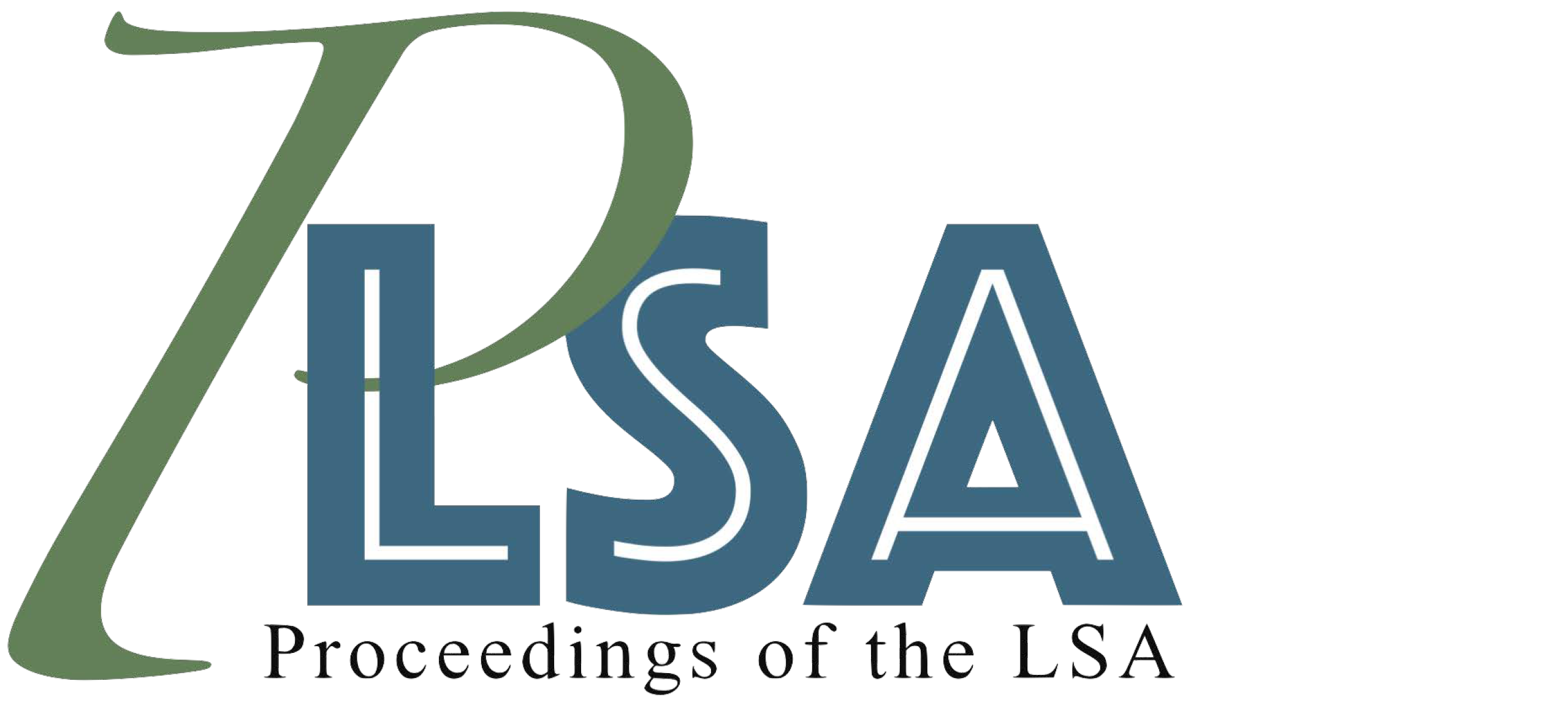Binding German (in)direct objects: Spell-out strategies for disambiguation
DOI:
https://doi.org/10.3765/plsa.v4i1.4534Keywords:
Reflexive binding, double-object construction, structural accusative case, inherent da-tive case, object coreference, inherent reflexivity, Encyclopedia, Spell-OutAbstract
Despite Grewendorf's (1988) well-known German binding data with the double-object verb zeigen 'show', which suggests that the direct object (DO) is generated higher than the indirect object (IO), this paper argues for the canonical surface order of IO>DO as base order. Highlighting the exceptional status of Grewendorf's examples, building on Featherston & Sternefeld's (2003) quantitative acceptability rating study, and exploiting the fact that zeigen can also be used as inherently reflexive with idiomatic meaning, and we appeal to Bruening's (2010) theory of idiom formation as well as the Encyclopedia within Distributed Morphology (Marantz 1997, Embick & Noyer 2007) and propose a flexible Spell-Out mechanism within a derivational approach to binding (e.g. Hornstein 2001 and Zwart 2002) that can override narrow syntactic case licensing by realizing nominals with different morphological case.Downloads
Published
2019-03-15
Issue
Section
Articles
License
Published by the LSA with permission of the author(s) under a CC BY 4.0 license.
How to Cite
Twiner, Nicholas, and Vera Lee-Schoenfeld. 2019. “Binding German (in)direct Objects: Spell-Out Strategies for Disambiguation”. Proceedings of the Linguistic Society of America 4 (1): 35:1–15. https://doi.org/10.3765/plsa.v4i1.4534.
